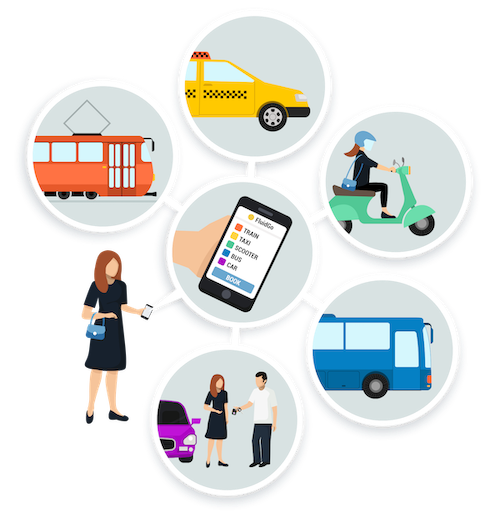The MaaS Positioning Guideline
Are you currently considering whether Mobility-as-a-Service is the right approach for your project? Not sure which actors are important and who you need first as partners in the ecosystem? Still unsure what level of integration you want to cover with your MaaS solution?
The use cases for Mobility as a Service are very diverse. With MaaS, you can promote the use of collective mobility types such as shared taxis or ridesharing, set incentives for CO2-friendly travel, improve employee mobility or build a regional transport network in your city or region on which you can take regulatory action.
The guidelines from Fluidtime provide you with step-by-step instructions on getting started with MaaS. The guideline is designed to help you define a strategy and take the first essential steps towards smart mobility.
The guide helps you find the optimal positioning for your MaaS solution.
Take a look at our projects with UbiGo, GOLDBECK Parking and the city of Aarhus to get an impression of the different use cases. As you can see, there is no ideal path that is always the same. Rather, Mobility-as-a-Service gives you the opportunity to find a tailor-made solution for your project and personal goal. Before you start, there are various factors to consider.
- What is your position in the MaaS ecosystem?
- What is your goal with MaaS?
- Which customer group do you want to serve with MaaS?
- What budget is available for your project?
But also questions like:
- Which transport, payment and booking services do you need in your MaaS solution?
- What is the desired payment model?
- Which key figures are important to make the success of your MaaS solution measurable?
- What allies do you need?
The MaaS positioning guide is regularly expanded by Fluidtime through discussions and talks with companies, public authorities and mobility providers to give you even more targeted support in positioning.

